Despite our love for period films, we had to admit that living during the Victorian period must of being really difficult. And from this picture, which was taken during the 1900s, it wasn’t difficult only for us, but for Christmas trees too. This Christmas tree is doing a lot of work. It is burdened by loads of heavy Christmas decorations. There are plenty of bulbs and the tree is wrapped in layers upon layers of heavy tinsel.
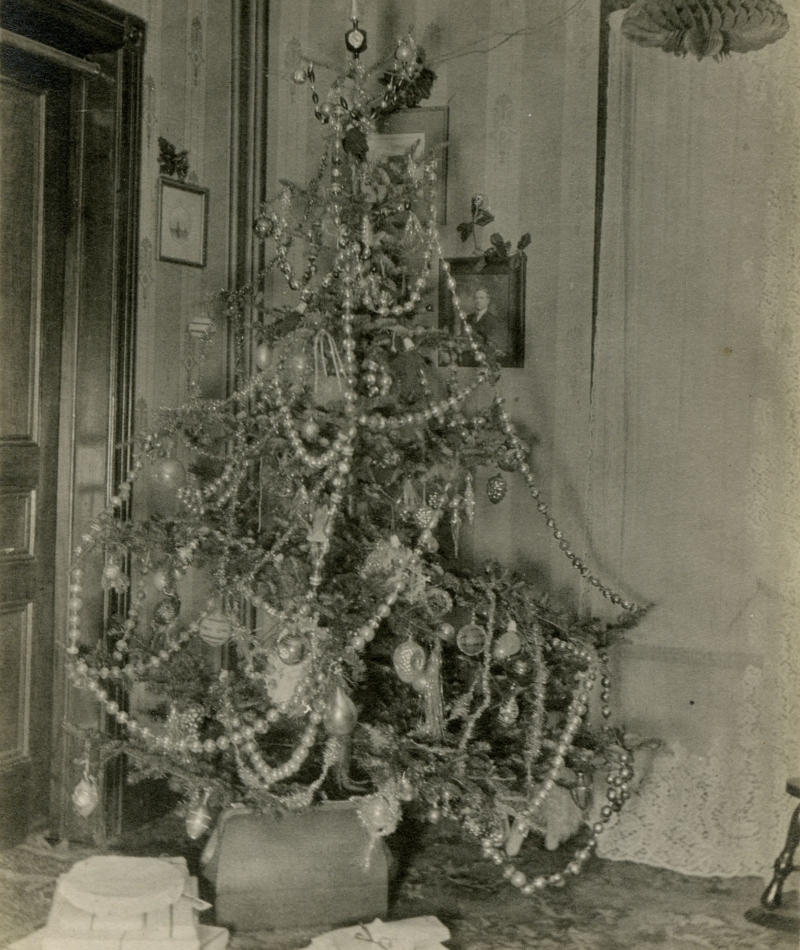
In fact, there are more decorations than there is tree. Not only does this photo show us that the Victorian Christmas trees did a lot of heavy lifting, but that Victorians went all out for this festival. Fortunately for the tree, Christmas only comes around once a year.
The Infamous Mistletoe
When we think of Victorians, we generally think of a conservative culture that didn’t encourage intimacy. However, mistletoes were a whole other story. The Victorians were absolutely in love with mistletoes – and took the tradition of kissing under the mistletoe to heart. Interestingly, the tradition of kissing under the mistletoe began during the 18th century but grew in popularity during Victorian times.
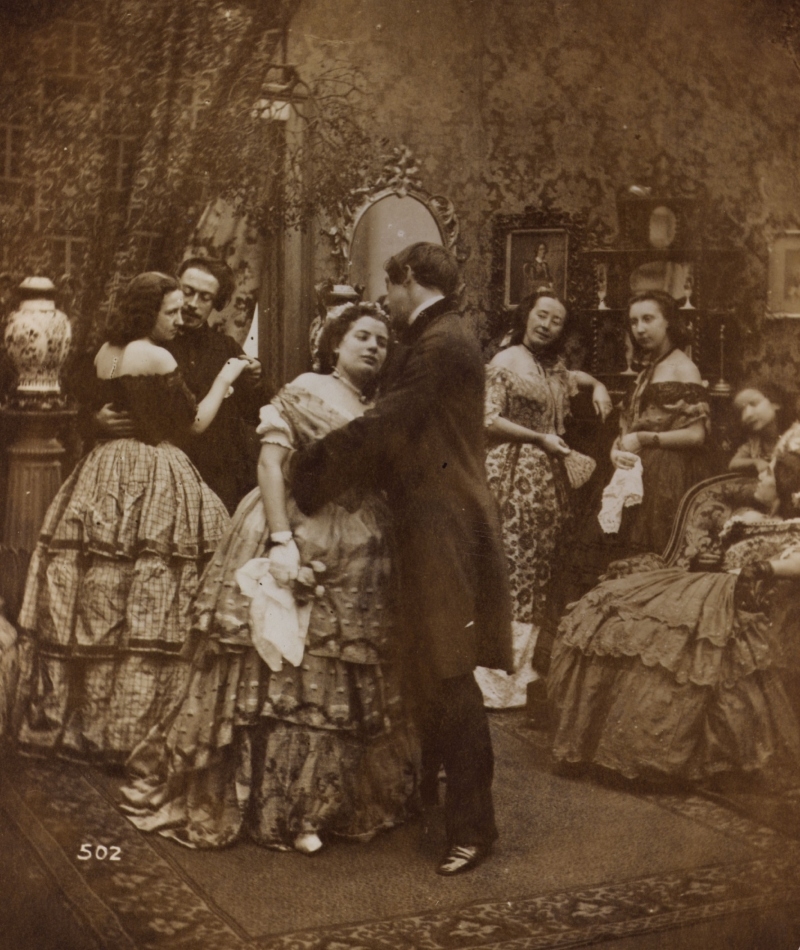
Here, we see how popular the tradition was. We have two couples and some uncoupled ladies at a chic rendezvous in full-on Victorian garb. One of the couples is having a tender moment under the mistletoe. For what seems like an ultra-conservative period, we must compliment the Victorians on their romance.
A Victorian Christmas
We’re not the only ones who eagerly look forward to Christmas. From this photo, we see that the Victorians also made a big deal about Christmas. We see a Victorian family posing with their Christmas tree. What’s interesting is that we aren’t so different from our 19th-century counterparts. They too have decorated their big tree with bright, shiny decorations.
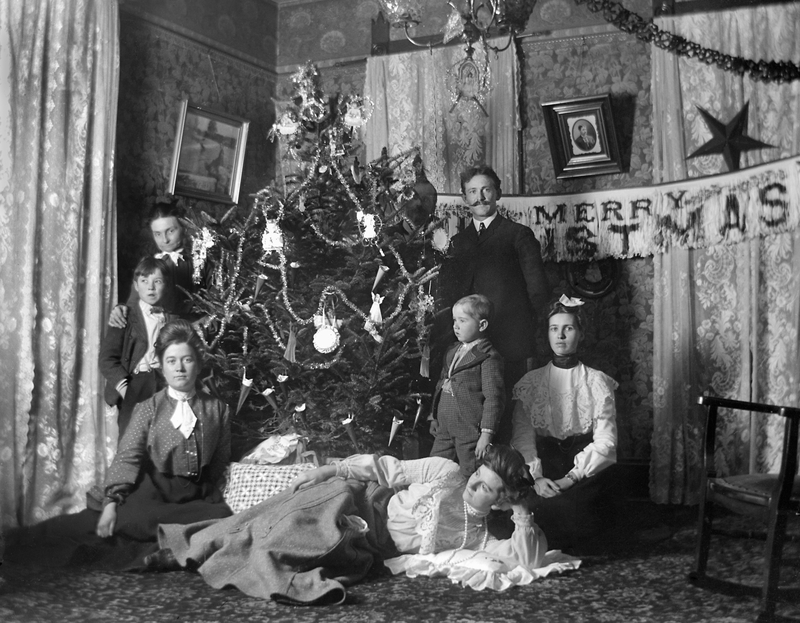
The Christmas decorations also extend beyond the tree so the whole living room has the Christmas spirit. What is different is the family’s wardrobe. No one is exempt from wearing a high collar. Even the two younger boys have their coats buttoned to the very last button. The women in the family too wear high collars accompanied by flared sleeves.
Street Life in London
We can’t imagine that living during the Victorian period was easier than living now. And living or making a living on a street in London in this period must have been that much harder. One photographer, John Thompson, dedicated his life to capturing moments of street life in London during this age. This photo is one of Thompson’s works.
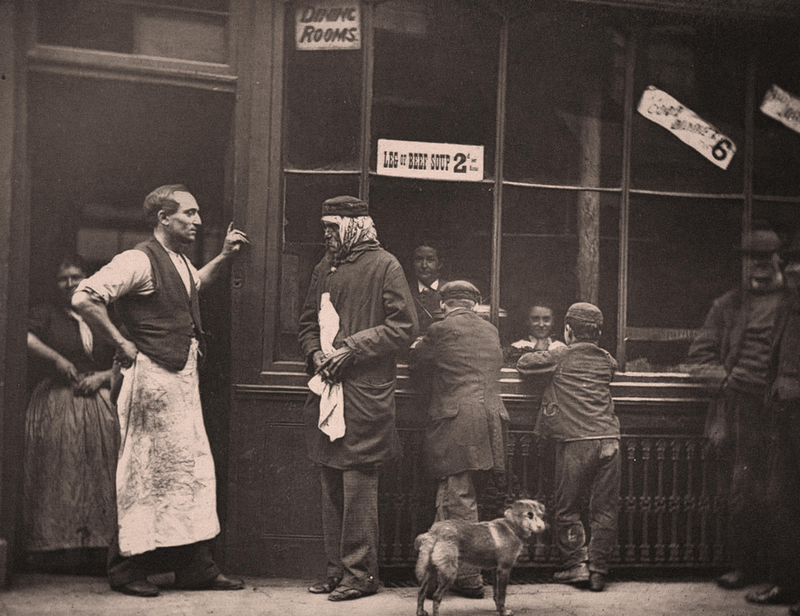
On the store’s windows, you can see the restaurant or soup kitchen selling “Leg of Beef soup.” We’re not sure about the interaction between the restaurant owner and the man wearing a hat, but we imagine that the people on the outside are in need of a meal. This photo shows us the hardship street dwellers suffered during this period.
Christmas Tree Shopping
If there is one thing, we have to admit to ourselves after seeing this photo, it is that Christmas tree shopping is much easier these days than it was during the Victorian era. Even if we are buying a real tree, we still have vehicles to help with transportation. All the woman has is a wooden cart. And she has to pull it for miles.
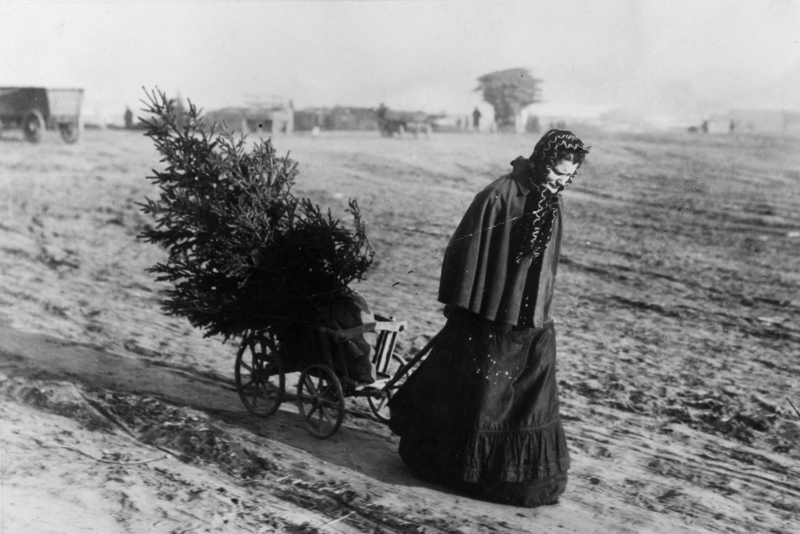
And to add to her burden, her Victorian wardrobe doesn’t make her task any easier. The woman is dressed in a very full and heavy black dress, an overcoat, and a scarf wrapped around her head. Of course, we imagine that it's pretty cold out as this photo was taken midwinter, so the heavy clothes make sense.